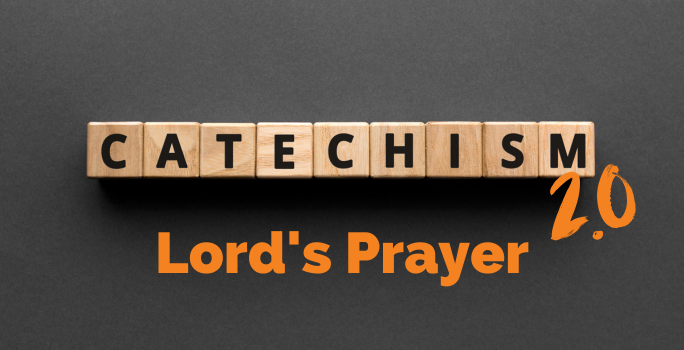Note to the Leader
The goal of this study is to talk about the resurrection of Christ and the wonderful joy that can be found in that. I think it is also important to talk about the events that led up to Sunday, so we will also be looking at the events that led up to Jesus’ crucifixion. We need to be reminded of the suffering that Jesus was willing to endure for us as well., the suffering that should have been ours. I feel that this makes the joy of the resurrection that much more wonderful.
This could be used as a longer single study or it could be broken up into a few studies as we are covering quite a bit of material throughout the study.
Download of the PDF of the study here.
___________________________________________________
Opening Prayer
Opening Discussion
Ask the students what comes to mind when they hear the word “Easter”. You will get many of the Sunday school answers here, but also encourage them to think about how the world thinks about Easter (bunnies, eggs, candy, etc). Easter has been portrayed by our world with cute rabbits, candy, pastel colors and colorful eggs. This is in sharp contrast to the scriptural account of the events leading up to Easter.
Looking at God’s Word
Read Matthew 26:47-56
What is one word that could be used to sum up this section of scripture?
Give some time for answers here (depending on the answers given you can spend some time working through the words that students come up with), but the word I’m thinking of is betrayal. We see it twice in these verses. The first, and most obvious one, is the betrayal of Judas in verses 48-50. Then, there is also a betrayal in verse 56 when we see all of the disciples turn and flee from Him. Our wonderful Easter story starts out with the pain of Jesus’ closest friends turning their backs on Him.
Application Discussion
Ask the students to think about a time in their life when they have betrayed someone they are close to. How did that have an impact on the relationship? What was the outcome of that betrayal? How did Jesus react to the disciples’ betrayal? Did he write them off and never talk to them again? Did he seek to get revenge on them? Of course not, He continued down the path of dying on the cross for them and forgiving their sins. How is that different from the way we would react in that situation?
Leader Note: Don’t require them to share but encourage them to share and let them know that this is a safe place for sharing. You may have a student that doesn’t want to share with the entire group but may want to talk with you afterwards. Be prepared for that, and make sure you set time aside for that at the end just in case. You don’t want to have a student that is willing to share something that may be hard for them to talk about and you don’t have time to stay. You may also think of a story that you have here that might be helpful.
Read Matthew 26:57-68
Why were the chief priests so desperate to put Jesus to death?
He was undermining their authority and the people were turning against them and their false teachings.
What was finally said in verse 61 that gave the chief priests the “proof” they were desperately looking for to put Jesus to death?
“This man said, ‘I am able to destroy the temple of God, and to rebuild it in three days’”. They took this as blasphemy, but what this really was a misunderstanding of what Jesus was saying. They were worried He was going to destroy the earthly temple, which was their source of income. Jesus was talking about the temple of His body. This is foreshadowing of what is to come later on the cross.
Application Activity
Has there ever been a time where you have misunderstood someone and because of that you have been completely lost about what is actually going on? Encourage students to share during this time about misunderstandings they have had in their life and what the outcome was. In this instance with the chief priests, they totally missed the meaning of Jesus’ death and resurrection, and as a result they missed out on the forgiveness of sins and eternal life that comes with faith.
Read Matthew 27:11-14
What is Jesus’ answer when Pilate asks Him if He is the King of the Jews in verse 11?
Jesus says, “You have said so”.
Why does Jesus give such an enigmatic answer to Pilate’s question?
He’s trying to get Pilate to understand that He’s not the kind of king that Pilate is thinking that He is. The Jews are trying to portray Him as an earthly king who is going to be a threat to Rome. This is not the kind of king that Jesus came to be.
Read Matthew 27:24-31
What did the soldiers do to Jesus?
- They dressed Him up like a king, complete with a purple robe, crown of thorns, and a reed in His hand. Again, we see them thinking that Jesus is claiming to be an earthly king. They don’t know that Jesus is our heavenly king, and His saving work will happen on the cross, but as we will see in a few verses here, some of them start to believe.
- They also scourged or beat him with a whip. Jesus was whipped and His flesh was torn for us. Did he deserve it? No, he didn’t, but did He do it anyway because He loved us? Yes, he did. When I lead studies on this, I like to spend time talking about this because I think this is something that has just become a commonplace part of the story and it’s always eye opening for students to realize exactly what Jesus went through for us, and because of His love for us.
Read Matthew 27:32-44
What was written on the sign over Jesus’ head on the cross?
In verse 37 we see that the sign read “This is Jesus, the King of the Jews”. Here we have yet another reference to Jesus being a king. If we were to look at this same section in the gospel of John, specifically chapter 19:19-22 we would see the Jewish leaders complaining about the sign and telling Pilate not to write king of the Jews. Pilate tells them, “What I have written, I have written.” I have often wondered if between Pilate’s interaction with Jesus and his wife’s dreams, if maybe Pilate isn’t starting to believe that Jesus may be who He says He is. I’m not saying this is the case, but I have wondered about it before.
Read Matthew 27:45-56
What are the signs that happen as Jesus is nearing His death on the cross?
- Darkness was over the land
- Verse 45 tells us that from the 6th-9th hour there was darkness over the land.
- This would have been in the middle of the day, so it was definitely out of the ordinary.
- The curtain of the temple was torn in two (one of my favorite parts of scripture)
- This curtain in the temple is what separated the holy of holies from the rest of the temple. The holy of holies was, traditionally, where the people believed that God’s spirit was present in the temple. Only the high priest could enter this area.
- When the temple curtain tears in two, it is symbolically showing us that the holy of holies is now open to everyone. Everyone has access to God because of Jesus’ death and coming resurrection.
- There was an earthquake
- Tombs were opened and bodies were raised from the dead
How did these signs have an impact on those present at the crucifixion?
We see in verse 54, that even the centurion and those with him said, “Truly this was the Son of God!” These signs are all signs of the end of the world indicating that, from Matthew’s perspective, the death of Jesus is the end of the world. This can lead to some interesting discussions about the “end times” as we recognize that the world has already “ended” and come into judgment in the death of Jesus on the cross.
Read Matthew 28
What does the angel tell the women that went to the tomb on the Sabbath?
Verses 5 and 6 tell us that the angel says, “Do not be afraid, for I know that you seek Jesus who was crucified. He is not here, for He has risen, as He said.”
Where in scripture did Jesus say He would rise from the dead?
- Matthew 16:21
- Mark 8:31
What other task does the angel give to the women?
Verse 7 says, “Then go quickly and tell His disciples that He has risen from the dead”. The women were tasked with going and telling the good news. We are also called to go and tell the good news.
What are we told to do in Matthew 28:19?
We are called to go and make disciples. How do we make disciples? By telling people about what Christ has done for us and by bringing people to the waters of baptism.
What does the resurrection mean for us?
- 1 Corinthians 15:17-26
- Without Jesus’ resurrection, we are still in our sin and without hope.
- Ephesians 2:8
- We are saved through our faith in Christ, which is a gift of God.
- Romans 6:23
- We deserve death, but we are given the free gift of God, which is eternal life.
- Romans 10:9
- If we confess with our mouth and believe in our heart that Jesus is Lord (which can only be done in faith, which comes through baptism), then we will be saved.
- John 3:16
- The gospel in a nutshell.
Through Jesus’ death and resurrection, we have been given the greatest gifts of all; forgiveness of sins and eternal life. Without what Jesus did for us on good Friday and then on Easter morning, we would be left having to answer for our own sins. We would be left trying to atone for ourselves. Without Jesus’ amazing love and sacrifice, we would be going to hell. That’s the amazing story of Easter. The story of a Father’s love for His creation. A love so strong that He sent His one and only Son to the cross so that He could wipe away our sins and bring us to be with Him in heaven.
*There are many other verses that can be used here if you’d like to extend the study further: 2 Corinthians 5:21, Mark 16:16, Romans 5:8 just to name a few.
Final Discussion
Ask the students again what they think of when they hear the word Easter now. What themes did they hear throughout the Easter story?
- Jesus is the King of Kings, yet He sacrificed for us.
- We often misunderstand and betray, yet Jesus still dies for our sins.
- Jesus’ death changes everything for us and we respond in love to others.
You can wrap up talking about the unwavering love of God and the wonderful gifts of forgiveness and eternal life that are ours through the death and resurrection of Jesus.










0 Comments